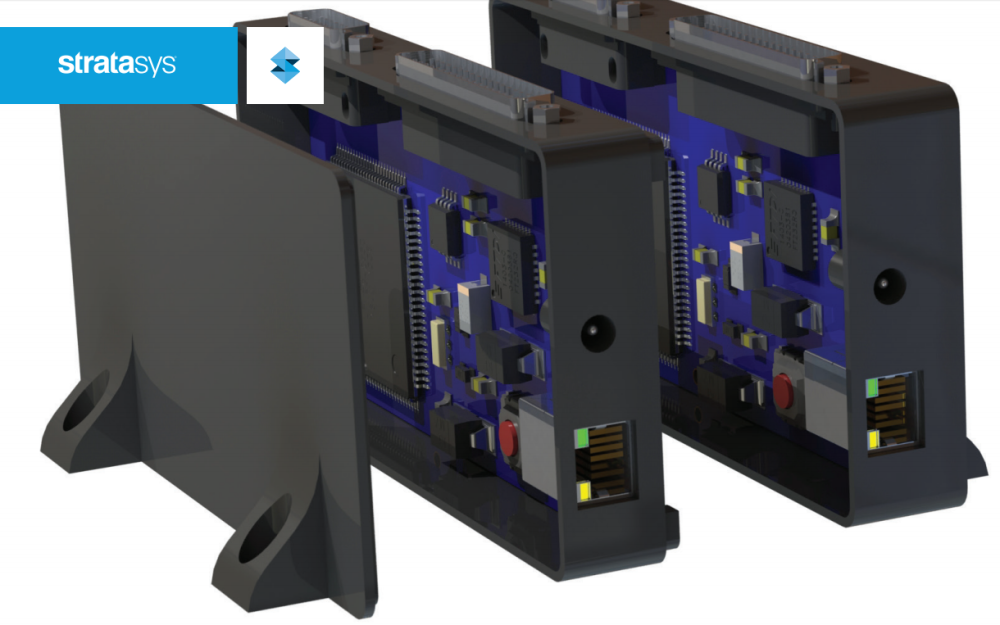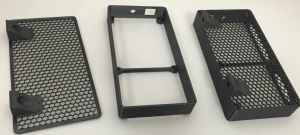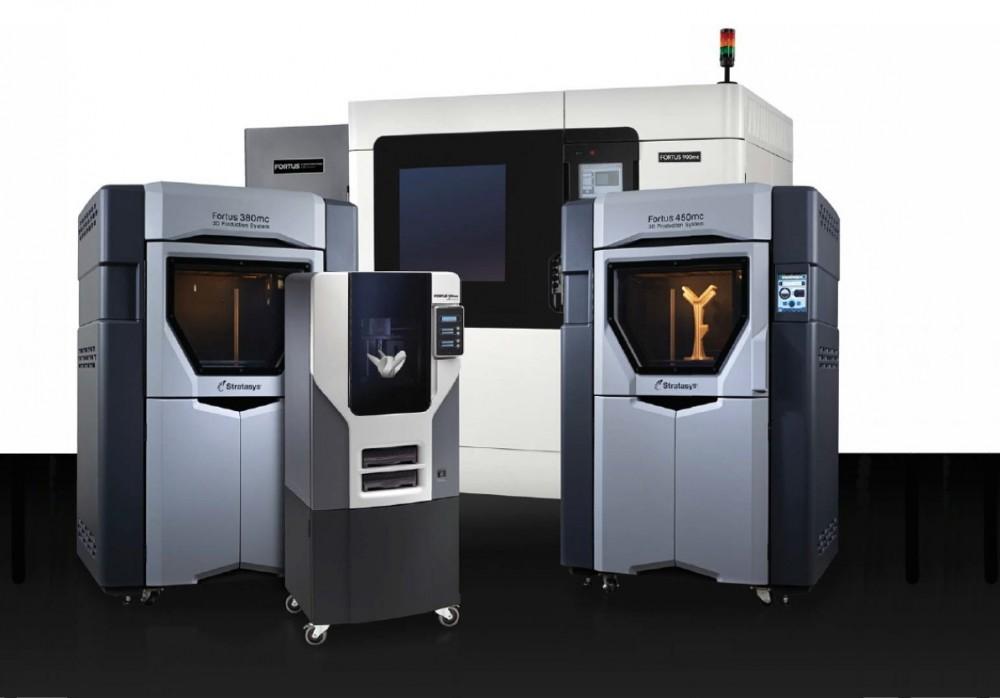 Until they purchased MakerBot, global 3D printing company Stratasys was primarily known for their industrial or professional grade 3D printers. While the company has been seemingly focusing a lot of their energy on the at-home, desktop 3D printer for the last few years, they have never really stopped being the largest supplier of high-end, industrial 3D printers in the industry. As the aerospace industry became more interested in the capabilities of 3D printing, the company already had the printers to sell them, but still needed to develop advanced 3D printing materials. Rather than have their materials researchers just create something new, Stratasys decided to let companies come to them and tell them what they need, and then develop the material.
Until they purchased MakerBot, global 3D printing company Stratasys was primarily known for their industrial or professional grade 3D printers. While the company has been seemingly focusing a lot of their energy on the at-home, desktop 3D printer for the last few years, they have never really stopped being the largest supplier of high-end, industrial 3D printers in the industry. As the aerospace industry became more interested in the capabilities of 3D printing, the company already had the printers to sell them, but still needed to develop advanced 3D printing materials. Rather than have their materials researchers just create something new, Stratasys decided to let companies come to them and tell them what they need, and then develop the material.
 The world is becoming a smaller place and we have the internet to thank, or blame, for that. We now have an entire generation of adults who have never known what it was like to live without an internet signal. In fact, more and more home devices are requiring an internet signal to function at all, and as the Internet of Things begins to take shape that number is expected to increase exponentially. Because much of that data is moved back and forth via satellites, that also means that there will need to be an exponential increase in the amount of satellites in orbit to process all of it. This has necessitated the need to develop smaller and less expensive technology, which is really hard to do when the technology is being sent into space.
The world is becoming a smaller place and we have the internet to thank, or blame, for that. We now have an entire generation of adults who have never known what it was like to live without an internet signal. In fact, more and more home devices are requiring an internet signal to function at all, and as the Internet of Things begins to take shape that number is expected to increase exponentially. Because much of that data is moved back and forth via satellites, that also means that there will need to be an exponential increase in the amount of satellites in orbit to process all of it. This has necessitated the need to develop smaller and less expensive technology, which is really hard to do when the technology is being sent into space.
In orbit the temperatures will often rapidly shift anywhere from -150°C to +150°C, sometimes within the space of an hour. There is obviously no air flow in orbit, and electrostatic charges can build up very quickly and short out any delicate electronic components if they’re not shielded properly, leaving behind a very expensive piece of space debris. Space, especially in orbit around our planet, is an extreme environment that is incredibly inhospitable to technology. Any spacecraft that is designed for it needs to take that extreme environment into account, and anything that we launch into it needs to have a very high level of reliability.
Additive manufacturing has provided designers of modern spacecraft with an unprecedented freedom from most design restrictions. As companies continue to develop new 3D printing technologies and 3D printing materials those restrictions are quickly disappearing. Stratasys was asked by the design community for spacecraft and other launch vehicles to develop new materials that help them address the environmental conditions in space, and protect the delicate electronics in their satellites from the dangers of extreme temperatures and the risks of electrostatic discharge.
To make sure that the material that they developed would be up to the challenge, Stratasys Advanced Materials worked closely with their customer to engineer a material capable of meeting the unique challenges of spaceflight. What they ended up with is a thermoplastic material called ESD PEKK (dissipative polyetherketoneketone) that combines the electrostatic dissipative properties of one of their specialty materials ABS-ESD7 with the high durability and heat resistance of their ULTEM 9085 material. To top it off they included the chemical resistance of PEKK’s base resin, which offers a new material that will allow for the faster manufacturing of multi-functional production parts and components. The ESD PEKK material is ideally suited to the production of components like avionics boxes or components that provide the satellites with an internal structure.
Traditionally manufactured thermoplastic parts require post processing treatments like specialized coatings, paintings, and a covering of conductive tape to support the electrostatic dissipative requirements. The conductive filler of ESD PEKK was designed specifically to eliminate this expensive and time consuming step in the manufacturing process. Parts can be used right off the printer bed, and the high tensile strength, heat resistance and chemical resistance means that the production of these parts for spacecraft is ideal for the rapid manufacturing required to keep up with the growing demand.
The Engineered Materials Program, like the ESD PEKK project, is offered as a service to any customers who are in need of solutions for challenging material development problems. Materials can be developed to customer-specified requirements by Stratasys Advanced Materials, which has the ability to develop and produce a wide range of materials customized for any application-specific requirements that may be needed. Currently ESD PEKK is not available through existing Stratasys sales channels because it was a custom developed material. However, the material can be obtained with a custom order for the Fortus 3D Production Systems by contacting Stratasys Advanced Materials directly. Stratasys has collected a wide range of test data on the ESD PEKK material, which they used to produce a white paper about the ESD PEKK project. Discuss your thoughts on this new material in the ESD PEKK 3D Printing forum over at 3DPB.com.
Subscribe to Our Email Newsletter
Stay up-to-date on all the latest news from the 3D printing industry and receive information and offers from third party vendors.
Print Services
Upload your 3D Models and get them printed quickly and efficiently.
You May Also Like
3D Printing News Briefs, June 11, 2025: Sustainability, Automotive Tooling, & More
We’re starting with sustainability news in today’s 3D Printing News Briefs, as EOS has strengthened its commitment on climate responsibility, and Zestep is making 3D printing filament out of eyewear...
3D Printing 50 Polymer Stand-In Parts for Tokamaks at the PPPL & Elytt Energy
Of all the world’s things, a tokamak is one of the hardest, most complex, expensive and exacting ones to make. These fusion energy devices make plasma, and use magnets to...
3D Printing News Briefs, May 17, 2025: Color-Changing Materials, Humanoid Robot, & More
We’re covering research innovations in today’s 3D Printing News Briefs! First, Penn Engineering developed 3D printed materials that change color under stress, and UC Berkeley researchers created an open source,...
Firehawk Aerospace Partners with JuggerBot 3D, Gets $1.25M from AFWERX for 3D Printed Propellants
Texas-based Firehawk Aerospace, an advanced energetic materials firm that works with aerospace and defense applications, announced a strategic partnership with JuggerBot 3D, an Ohio-based large-format 3D printer manufacturer. Together, the...




































